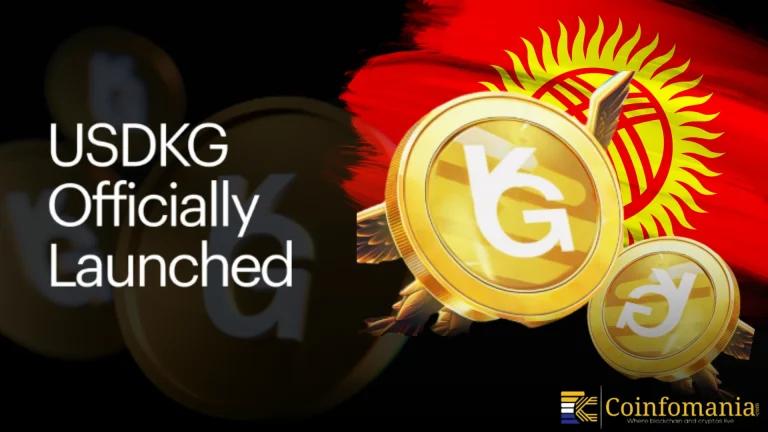Startale Group CEO Sota Watanabe Endorses Tokenomics 3.0 to Strengthen Astar Network
Let’s explore why Startale Group CEO supports Astar Blockchain’s Tokenomics 3.0, shifting to fixed supply and sustainable network growth.

Startale Group CEO Sota Watanabe announced his support for the Tokenomics 3.0 proposal. He said tokenomics drives blockchain performance and community trust. He noted that effective token models guide value flow and network resilience. Additionally, he argued that clear supply rules boost long-term stability. He explained how fixed supply and decaying emissions shape predictable economics. Sota Watanabe underscored the benefits of protocol-owned liquidity for financial autonomy. He backed the upgrade to signal investor confidence and wider community support for Astar Blockchain.
Transitioning to Sustainable Growth with Tokenomics 3.0
The Tokenomics 3.0 upgrade moves Astar tokenomics toward a fixed supply model. It caps total ASTR tokens at roughly 10.5 billion. This cap ends future minting to address inflation concerns. Emissions remain dynamic through a decay function tied to staking. The decay slows token rewards over time to balance incentives. This design ensures staking remains attractive without spurring excess inflation. By fixing supply and using decay, new tokenomics supports predictable economics. The model aims to sustain network growth and secure long-term stability for stakeholders. It balances token value with sustainable ecosystem expansion.
Builder and validator incentives form another core element of the upgrade. The model continues dApp staking rewards with a planned yield decline. Initial APR sits near seventeen percent with bonus rewards. Over two years, the yield decays toward around eleven percent APR. This gradual change balances developer incentives with network sustainability. It keeps builders engaged without driving excessive inflation. The design supports responsible token circulation within the Astar Blockchain. Developers and validators can plan long-term participation based on clear reward schedules. This incentive structure reflects community feedback. It aims to foster sustainable ecosystem growth.
Understanding Protocol-Owned Liquidity in Astar Blockchain
A key feature of this upgrade is Protocol-Owned Liquidity (POL). The Astar Finance Committee will manage the POL fund. It uses twenty percent of network fees and unused staking rewards. The fund helps Astar Blockchain secure Polkadot coretime slots autonomously. This avoids reliance on costly crowdloan campaigns. The POL structure strengthens financial independence and reduces external funding needs. It adapts to Polkadot’s evolving core time requirements and security demands. POL serves as a strategic liquidity reserve. This approach enhances protocol resilience and self-sufficiency within the wider ecosystem. Stakeholders can track POL performance through transparent reporting.
Astar’s New Fee Burn and Allocation System
The upgrade also overhauls fee management and the burn mechanism. Under new rules, fifty percent of transaction fees are permanently burned. Thirty percent of fees go to collators supporting network operations. The remaining twenty percent of funds are allocated to ecosystem development and the POL structure. This allocation maintains critical network services and community grants. The burn process reduces the circulating supply and reinforces the fixed-supply goal. These clear rules improve transparency and predictability. Monthly reports and public dashboards allow stakeholders to monitor fee usage and token burns. This model aligns with long-term ecosystem health. It gives clear guidance for sustainable operations.
Technically, the Tokenomics 3.0 upgrade updates Astar Blockchain smart contracts. It activates a supply lock to enforce the fixed supply. The emission decay formula integrates into the runtime environment. An enhanced burn mechanism is also embedded directly into the protocol code. Protocol-Owned Liquidity features become formal on-chain functionality. All updates undergo Astar Foundation review before deployment. Users will access public dashboards for real-time transparency. Monthly performance data provides accountability for token economics. These changes enforce disciplined token behavior and secure network integrity. Developers can audit code updates via public repositories. This approach builds community trust.
Breakdown of Astar’s Tokenomics 3.0 Implementation Plan
The upgrade follows a clear roadmap that began in April 2025. Initial community discussions served as a temperature check. Stages include concept design, technical development, and testing phases. Community feedback integrates at each major checkpoint. Full deployment targets mid-2026 completion. This method ensures transparency and shared ownership. Stakeholders receive regular updates through public channels and polls. Clear timelines guide planning and resource allocation. This inclusive process strengthens confidence in future Astar tokenomics by aligning with community needs. Regular surveys keep the plan adaptive to feedback. The roadmap balances efficiency and stakeholder input.
References
Follow us on Google News
Get the latest crypto insights and updates.


